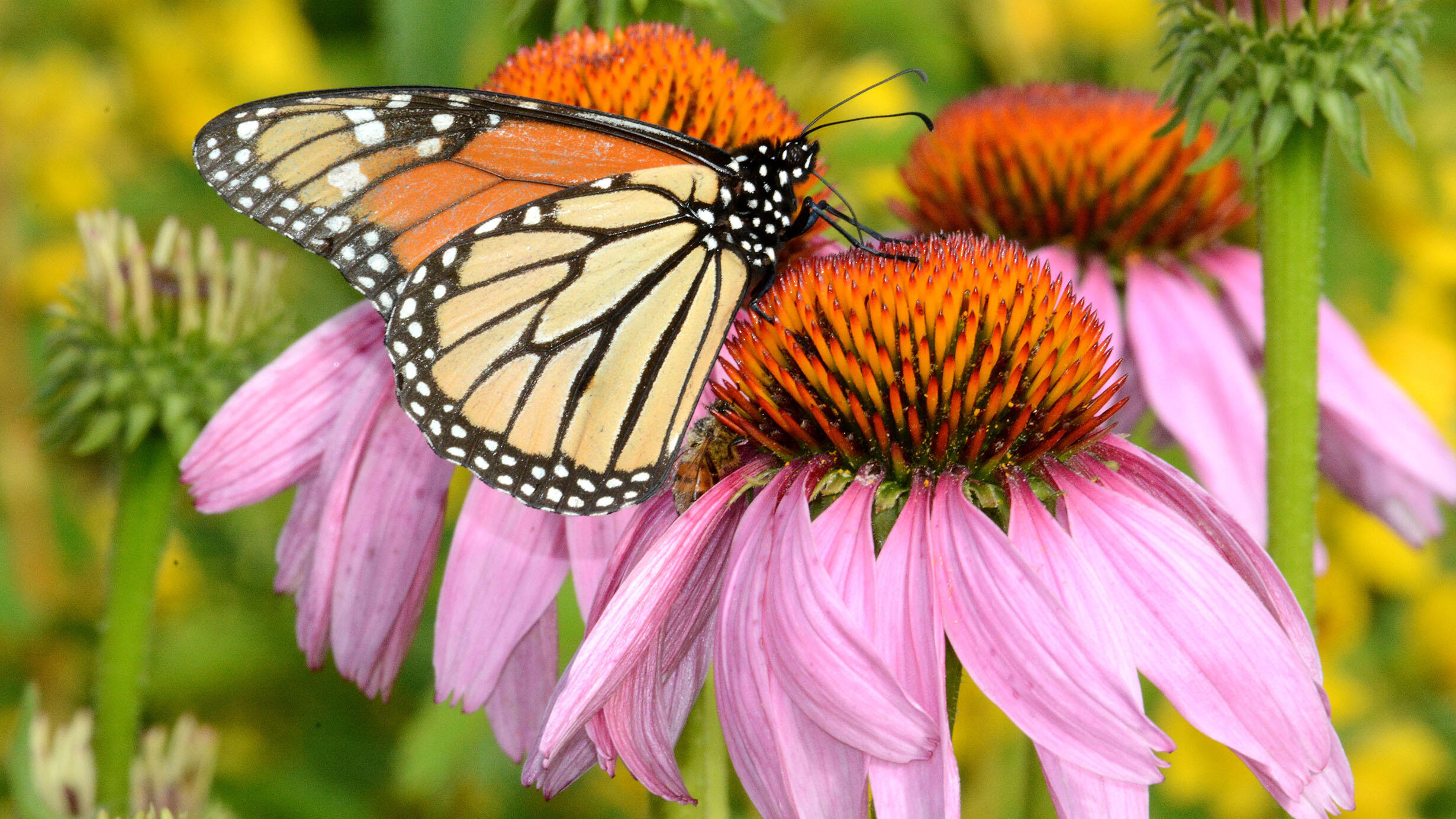Grow a Butterfly Garden
Part of the Davis Family Butterfly Vivarium exhibition.
 Jim Hudgins/USFWS/Flickr
Jim Hudgins/USFWS/Flickr By planting your own butterfly garden, you can invite them to your home and give them more opportunities to eat, rest, and reproduce.
Here are some tips for creating your own garden:
- Sunny gardens attract the most butterflies, so plant in the brightest part of your garden.
- Some important details to consider are sunny spots for basking, shelter from wind and rain, and sources of fresh water. Mud or sand puddles are used by adult male butterflies to obtain essential salts, needed for reproduction.
- Nectar plants provide food for a variety of adult butterflies, while different host plants, which supply caterpillars with food, attract specific species. Keep in mind that nectar plants may also serve as host plants to some species. You may want to include both in your garden.
- Most caterpillars feed only on specific types of host plants, so female adult butterflies deposit their eggs only on the plants their offspring will eat. By including host plants in your garden, you can witness the entire life cycle of the butterfly.
- Choose plants that will bloom at different times throughout the season. Try experimenting with a variety of plants that appeal to different butterfly species.
- Pesticides can harm butterflies, so avoid using them whenever possible.
- Do some research before you begin planting to determine which plants to use and how much space is required. Butterfly gardening and websites can help you make decisions. Also, ask your local native plant society if there are restrictions on particular plant species in your area.
Nectar Plants
Here are some Northeast nectar plants to consider for your butterfly garden. Some are common garden flowers, while others are wildflowers that may be more difficult to find:
Asclepias tuberosa
Aster spp.
Buddleia davidii
Cephalanthus occidentalis
Clerthra anlifolia
Echinacea purpurea
Eupatorium spp.
Liatris spicata
Monarda didyma
Phlox paniculata
Pycnanthemum muticum
Rhododendron spp.
Rudbeckia hirta
Salvia coccinea
Solidago spp.
Tagetes patula
Verbena spp.
Vernonia noveboracensis
Zinnia elegans
Some of the butterflies that utilize these plants for nectar include:
Family Papilionidae
Black Swallowtail (Papilio polyxenes)
Eastern Tiger Swallowtail (Papilio glaucus)
Family Pieridae
Cabbage White (Pieris rapae)
Orange Sulphur (Colias eurytheme)
Clouded Sulphur (Colias philodice)
Family Lycaenidae
American Copper (Lycaena phlaeas)
Gray Hairstreak (Strymon melinus)
Spring Azure (Celastrina ladon)
Eastern Tailed Blue (Everes comyntas)
Family Nymphalidae
Great Spangled Fritillary (Speyeria cybele)
Pearl Crescent (Phyciodes tharos)
American Lady (Vanessa virginiensis)
Painted Lady (Vanessa cardui)
Baltimore Checkerspot (Euphydryas phaeton)
Common Buckeye (Junonia coenia)
Monarch (Danaus plexippus)
Family Hesperiidae
Silver-spotted Skipper (Epargyreus clarus)
Fiery Skipper (Hylephila phyleus)
European Skipper (Thymelicus lineola)
Host Plants
Consider experimenting with some butterfly host plants as well. Here are some possibilities for your Northeast butterfly garden:
Antirrhinum major
Asclepias spp.
Aster spp.
Brassica spp.
Chelone glabra
Cirsium spp.
Foeniculum vulgare
Gnaphalium obtusifolium
Medicago sativa
Prunus serotina
Salix spp.
Sassafras albidum
Urtica dioica
Viola spp.